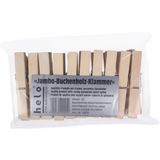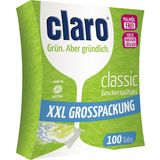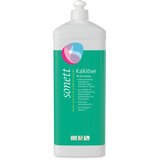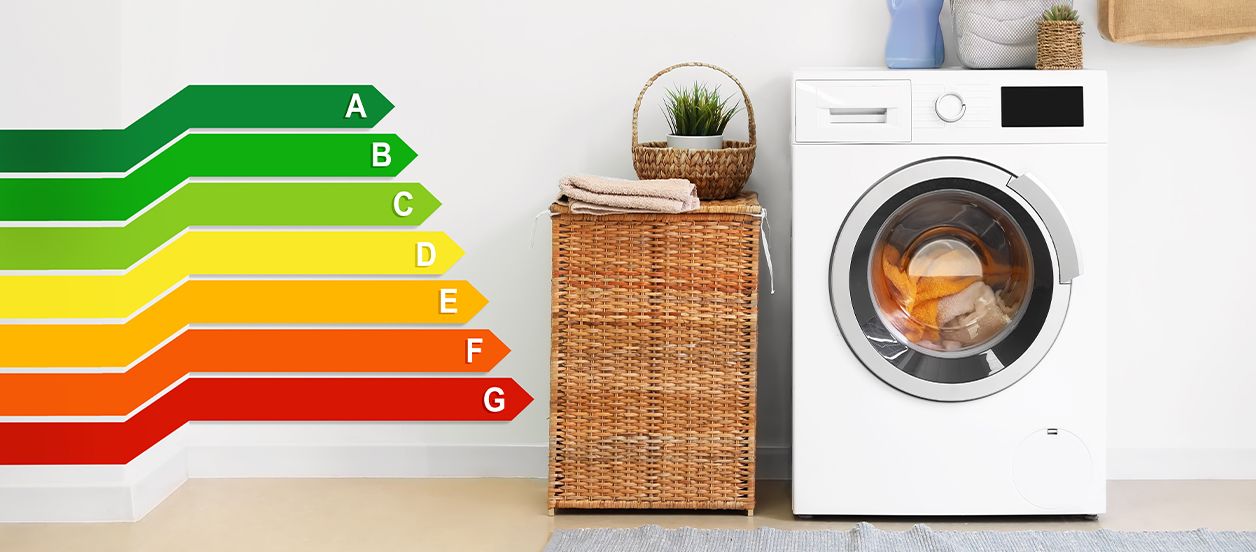Clever Energy-Saving Tips for your Home
Would you like to improve your energy consumption to protect the planet and reduce costs? Read our tips below to find out how! Read our tips below and find out how you can protect the environment and save on energy costs.
1.Wash going on?
Nowadays, detergents have such a satisfactory cleaning power that one can safely do without prewashing the laundry: when washing 3 loads of laundry a week, one can easily save up to 35 kilograms of CO₂. Washing machines that are not filled to capacity use the same amount of water and electricity as ones that are, so remember to always fill the washing machine to the fullest capacity and, if possible, choose an eco-friendly setting which takes longer but uses less water and electricity. You can also effectively reduce energy consumption by choosing the right temperature: with an efficient detergent, light to normal soiled laundry can also be washed at a washing temperature of between 30°C - 40°C. When selecting 40°C instead of 60°C you can expect to save between 35 to 40% on energy. Sheets and towels can be washed at 60°C instead of 90°C. Tip: Pre-treat stubborn stains with an environmentally friendly stain remover.
2. Dry, dry baby
Even though tumble dryers are extremely practical they do consume a lot of energy. Using a drying rack is the perfect way to dry the laundry to save energy and up to 385 kg of CO₂. Planning your laundry days in advance saves precious time and ensures that you have all the items needed available. Here are some suggestions if you are planning on using a tumble dryer:
- When buying a tumble dryer, opt for a heat pump dryer, as it uses up to 70% less electricity than a condenser dryer.
- Pay attention to the efficiency class. A class B rating or higher is recommended. r
- Use the dryer only when it is fully loaded.
- Consider using dryer balls which are suitable for up to a thousand drying cycles. This accessory allows air to circulate better and reduces drying time by up to 40%.
3. The dishwasher
The idea that washing dishes by hand is more energy efficient than using the dishwasher is not entirely correct. In fact, pre-washing the dishes under the tap and then loading the dishwasher to maximum capacity is the more efficient option. Opt for suitable dishwasher tabs and wash medium-soiled dishes at 30°C - 50°C. If your dishwasher has an economy mode, make sure you use it. Remember to clean the dishwasher regularly using special products in order to remove limescale, food residues and grease. This guarantee the efficiency of the appliance.
Remember to empty the filter and remove leftover food deposits: any blockages cause the dishwasher to use more energy to pump the water.
4. Goodbye limescale
You may have never noticed it, but limescale does accumulate in household appliances over time that are used daily - e.g. coffee machines, irons, kettles, etc. Save energy and descale the appliances using natural descalers.
5. The refrigerator
Most refrigerators are set to lower temperatures than are truly necessary. Preserving food correctly - using beeswax wraps for instance - and selecting the right compartment ensures that you are using the full potential of your refrigerator. To maintain the right temperature, allow hot food to cool before placing it in the refrigerator. Do not leave the refrigerator door open for too long to prevent heat and humidity from entering: this will save electricity and ice will form on the appliance less quickly. As for the freezer, remember to remove the ice regularly to save energy. Use special products to ensure perfect and hygienic cleaning
Related products
-
 4.1 (17)
4.1 (17)Sonett Stain Removal Spray, 100 ml
- Sugar surfactant with organic soapwort extract
- Also suitable for wool & silk
- Effective on stains
£2.75 (£27.50 / l)Delivery by May 17
-
 4.8 (9)
4.8 (9)Bürstenhaus Redecker Wooden Clothes Pegs with Coil Spring, 20 pieces, loose
- 20 pegs
- Size: 9 cm
- Rust-free
£10.80Delivery by May 17
-
 4.5 (27)
4.5 (27)claro ECO Classic Tabs, 100 Pieces
Bestseller- Water soluble film
- Palm oil free
- Made in Austria
£13.75 (£0.14 / Pc)Delivery by May 17
-
 £4.00 (£4.00 / l)
£4.00 (£4.00 / l)Delivery by May 17
Magazine Articles:
Discover Ecosplendo :
New Products:
-
Free delivery in Great Britain
from £59.90 -
Free
returns -
1 free sample with every order
Secure payments
with SLL encryption technology



